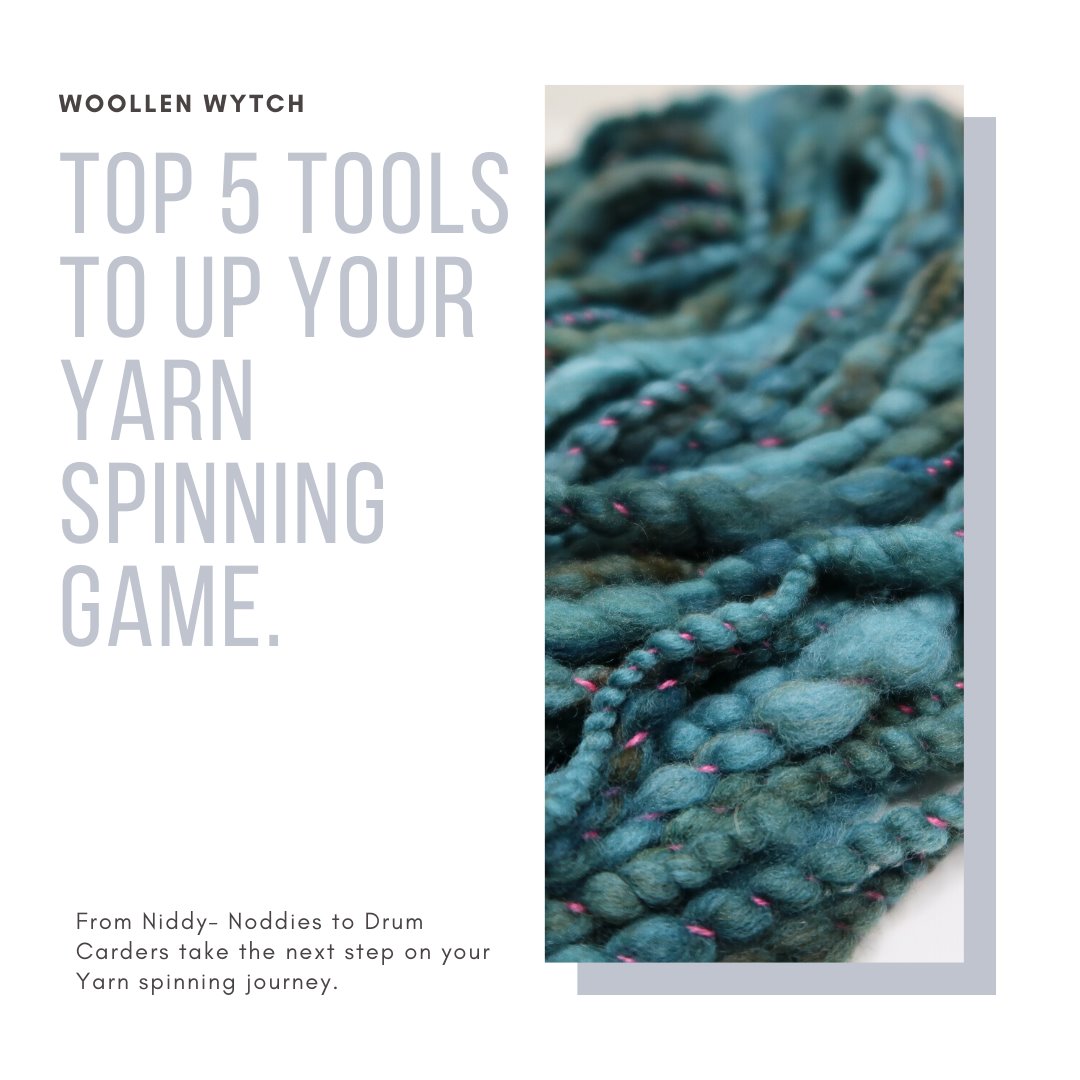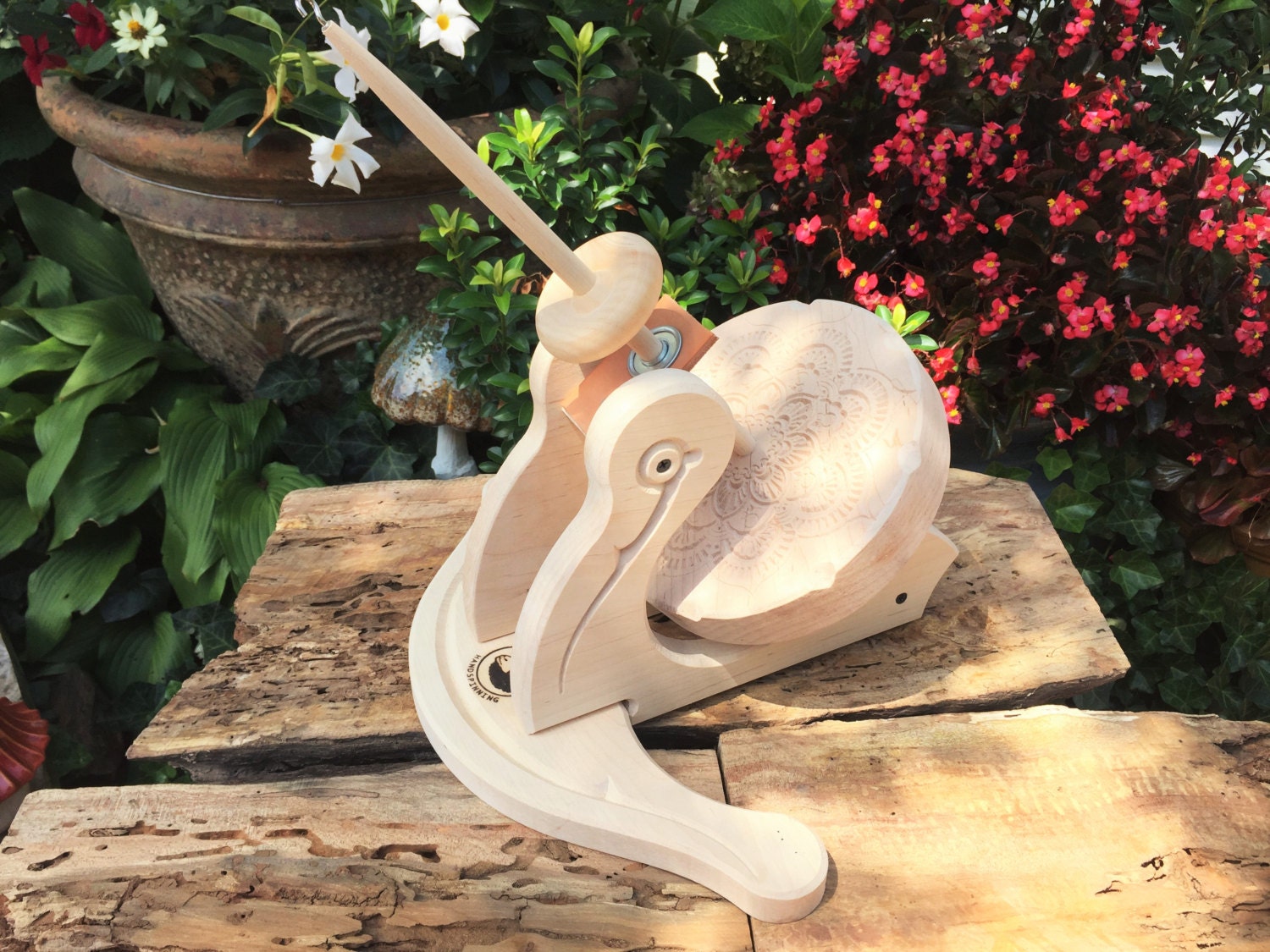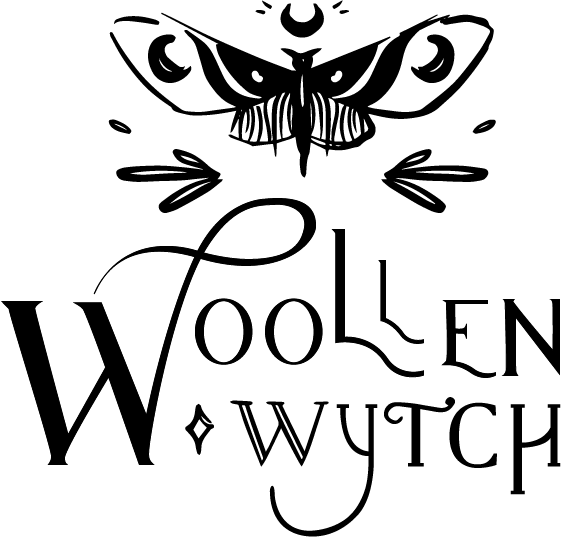
Top 5 tools to take the next step in Spinning Yarn
Share
 Did you treat yourself to the Woollen Wytch Drop Spindle kit? Have you mastered the basics of Spinning on a drop spindle? Now you're looking to take the next step and set off into the Sunset Spinning your yarn. But wait, you'll be needing some more spinning tools before you're a pro.
Did you treat yourself to the Woollen Wytch Drop Spindle kit? Have you mastered the basics of Spinning on a drop spindle? Now you're looking to take the next step and set off into the Sunset Spinning your yarn. But wait, you'll be needing some more spinning tools before you're a pro.
I've written you a little list of tools to give you a head start on the spinning-train. Yarn spinning tools to step up your spinning game and help you create some beautiful hand-spun yarn.
Niddy Noddy & Skein Winders

A Niddy Noddy or Skein Winder is probably the next logical step with spinning tools. Once you've spun your yarn, you'll want to take it off your spindle and work out the yardage, this is easily done using a Niddy noddy.
A niddy-noddy is used for hand-winding your spun yarn into a skein- ready to be washed, counted and finished. Niddy-noddies come in a variety of sizes, from small sampler sizes to jumbo sizes. The most common size produces a 5-foot hank, making it easy to approximate the total yardage. Just count the total number of wraps around the niddy-noddy and multiply by 5, then convert feet to yards (divide by 3).
Hand Carders & Blending Boards

After I had somewhat mastered my first Drop Spindle, a set of Hand Carders were the next tools I treated myself to.
Carding is the processing of brushing raw or washed fibres to prepare them for spinning or felting by aligning the fibres. But carding can also be used to blend different fibres together and making rolags.
Blending boards, are pretty much the same as a pair of hand carders but have a larger surface area. Essentially, you paint the boards with fibre, blending colours and textures. Then you roll the finished blend off the board to form a rolag.
Drum Carders

Drum Carders do essentially the same job as hand-carders, preparing fibres but at a faster speed. The advantage of a drum carder is how much quicker it can process fibre, the drawback being, that they're substantially more expensive.
But, if you can fathom forking out over £350 on a drum carder, you'll most definitely be rewarded with beautifully carded fibre batts for spinning.
Kick Spindle

A Spinning wheel works by continuously pulling the spun yarn onto the flyer, whereas a kick spindle works in the same light as a drop spindle. Once the drafted and spun yarn is too long to work with you need to manually add it to the spindle shaft.
A Kick spindle is like a stepping stone between a drop spindle and spinning wheel. Personally I don't have one, but that doesn't stop me dreaming about owning the Calypso by Heavenly Handspinning on Etsy.
Spinning Wheel
The beast of all spinning tools and the holy grail to any new Spinner...the Spinning Wheel. They come in all shapes and sizes, using different tension techniques. To get into the nitty-gritty of Spinning Wheels is a whole other intense blog post. But it's safe to say research is your friend when purchasing your first wheel.
But if you really don't want to drop over £300+ you can even try building your own DIY Spinning Wheel. That's the way I went before buying one, we built mine out of an Ikea stool and a children's bike wheel, but I've seen them made out of old sewing machines and even PVC piping. There's even a DIY Wheel group on Ravelry to help you with designs.
I'm sure there's plenty more tools about that perfect to help with Spinning yarn and improving your new hobby, but for me these are some of the most fun tools to upgrade and learn the art of hand spinning wool.
Do you have any other suggestions for Yarn spinning tools? I'd love to hear them. Leave a comment below!

